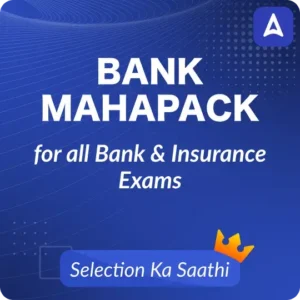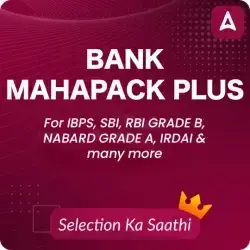Directions (1-5): Rearrange the following six sentences (A), (B), (C), (D) & (E) in the proper sequence to form a meaningful paragraph and then answer the questions given below.
(A) It was possible due to regular and critical reviews ensuring constant feedback and criticism.
(B) Every day at least 15 lakh calls were made to people and in a month one call goes to every citizen to elicit feedback.
(C) Nowhere in the world was such a massive exercise being carried out.
(D) Still, there was scope for improvement in performance, delivery mechanism and also in achieving the targets.
(E) The government achieved a lot in spite of the hurdles created by and non-cooperation from the Centre.
Q1. Which of the following would be the FIRST sentence after the rearrangement in the correct sequence?
(a) B
(b) E
(c) C
(d) A
(e) D
Q2. Which of the following would be the SECOND sentence after the rearrangement in the correct sequence?
(a) B
(b) C
(c) D
(d) A
(e) E
Q3. Which of the following would be the THIRD sentence after the rearrangement in the correct sequence?
(a) A
(b) D
(c) C
(d) E
(e) B
Q4. Which of the following would be the FOURTH sentence after the rearrangement in the correct sequence?
(a) D
(b) A
(c) B
(d) E
(e) C
Q5. Which of the following would be the FIFTH sentence after the rearrangement in the correct sequence?
(a) A
(b) B
(c) C
(d) D
(e) E
Directions (6-10): In each of the questions given below a sentence is given with one blank. Below each sentence FIVE words are given out of which ONE can fit the BLANK given in the sentence. You have to choose the correct word which can fit in the given sentence.
Q6. Moments later he signed a fresh set of …………….. against Iran and warned countries against any cooperation with Iran on its nuclear weapons programme.
(a) rules
(b) norms
(c) sanctions
(d) reimbursements
(e) penalties
Q7. It is unfortunate that despite the ………………… nature of the crime, which took place over several days in January, when the girl from the nomadic Bakherwal community went missing, some sought to see the incident along sectarian lines.
(a) unstable
(b) brilliant
(c) horrific
(d) tranquil
(e) boiling
Q8. In the normal course, only ………………… inaction on the part of the State police is a reasonable ground for shifting the probe to another agency.
(a) deliberate
(b) relentless
(c) unwitting
(d) serious
(e) vagary
Q9. Vladimir Putin, who has maintained a tight grip on power in Russia for almost two decades, begins his fourth term as President at a time when the country is going through a difficult period, economically and …………………
(a) intentionally
(b) financially
(c) diplomatically
(d) practically
(e) authentically
Q10. A section of articulate Nagas who have ………………….. the secrecy around the Framework Agreement believe that its terms need to be discussed and debated.
(a) questioned
(b) stated
(c) rejected
(d) answered
(e) doubts
Directions (11-15): Rearrange the following five sentences (A), (B), (C), (D) and (E) in the proper sequence to form a meaningful paragraph and then answer the questions given below.
Q11. (A) Don’t they know of the many scientists who had been just ordinary students?
(B) It is hard to think how anyone can decide a student cannot study a subject because the marks in the particular subject are ‘low’.
(C) There is today a culture of glorifying only students who have secured relatively high marks
(D) Who are we to write off someone’s destiny?
(E) in the subjects of ‘greater order of significance’.
(a) CBDEA
(b) CEABD
(c) CDEBA
(d) CEBAD
(e) CABED
Q12.(A) meeting them halfway to make everyone’s day better.
(B) So, as much as I like to watch my regular soaps, I watch that teen drama on TV and commiserate
(C) with them about how brutal homework can be.
(D) I too get the giggles, the huhs and the duhs! But I think I handle them better than my better half,
(E) It’s not just my husband.
(a) EBCDA
(b) EADCB
(c) ECDBA
(d) EDBCA
(e) EDABC
Q13. (A) with a majority of them living past 60.
(B) with an incidence of about 30,000 babies a year in India.
(C) has almost doubled during the past three decades,
(D) The overall life expectancy of individuals with Down Syndrome
(E) DS occurs across gender, racial and socio-economic profiles,
(a) DCBEA
(b) DCAEB
(c) DEABC
(d) DBCEA
(e) DACEB
Q14. (A) and a collection of lipsticks from the most loved decade were before us.
(B) an array of cosmetics including eye-shadow kit, blush, mascara and liquid foundation,
(C) A little badgering by loving daughters pushed our father to unfasten the lock with a hammer.
(D) Our happiness knew no bounds as our eyes almost immediately exhibited the feeling.
(E) Wooden hair pins, metal bindi stamps with tiny containers of coloured bindi powder, small wooden kumkum cases,
(a) CEADB
(b) CDBEA
(c) CDEBA
(d) CBDEA
(e) CADEB
Q15. (A) It was probably the last decade when one witnessed the existence of a hobby such as philately
(B) or learnt the idea of cinema halls being a focal point of urban spaces, or would know that Eclairs was a toffee of the highest order.
(C) From this perspective the 1990s should be lauded aside from being loved, for its fine balancing act.
(D) The decade cherry-picked the finest to offer to us millennials.
(E) Or so I would like to believe.
(a) ADCBE
(b) ACDEB
(c) ABDCE
(d) ABCDE
(e) AEDCB
Solutions
S1. Ans.(b)
Sol. EABCD is the correct sequence; E
S2. Ans.(d)
Sol. A
S3. Ans.(e)
Sol. B
S4. Ans.(e)
Sol. C
S5. Ans.(d)
Sol. D
S6. Ans.(c)
Sol. sanctions- an approval, by an authority, generally one that makes something valid; a coercive measure.
S7. Ans.(c)
Sol. horrific- causing horror
S8. Ans.(a)
Sol. deliberate- intentional
S9. Ans.(c)
Sol. diplomatically- exhibiting diplomacy
S10. Ans.(a)
Sol. questioned- that which is asked and considered
S11. Ans.(d)
Sol. CEBAD
S12. Ans.(e)
Sol. EDABC
S13. Ans.(b)
Sol. DCAEB
S14. Ans.(c)
Sol. CDEBA
S15. Ans.(d)
Sol. ABCDE


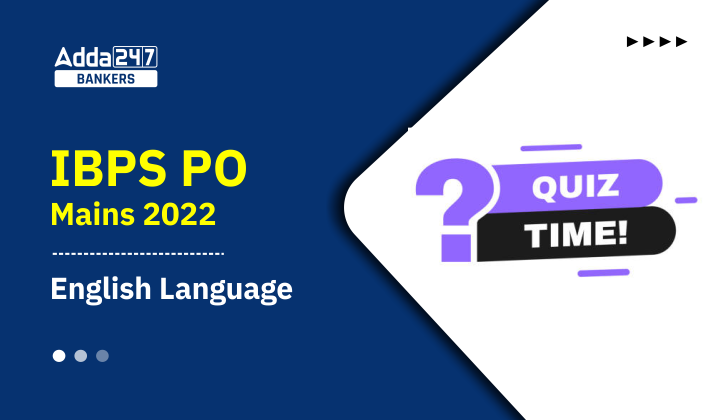
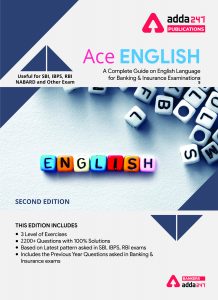
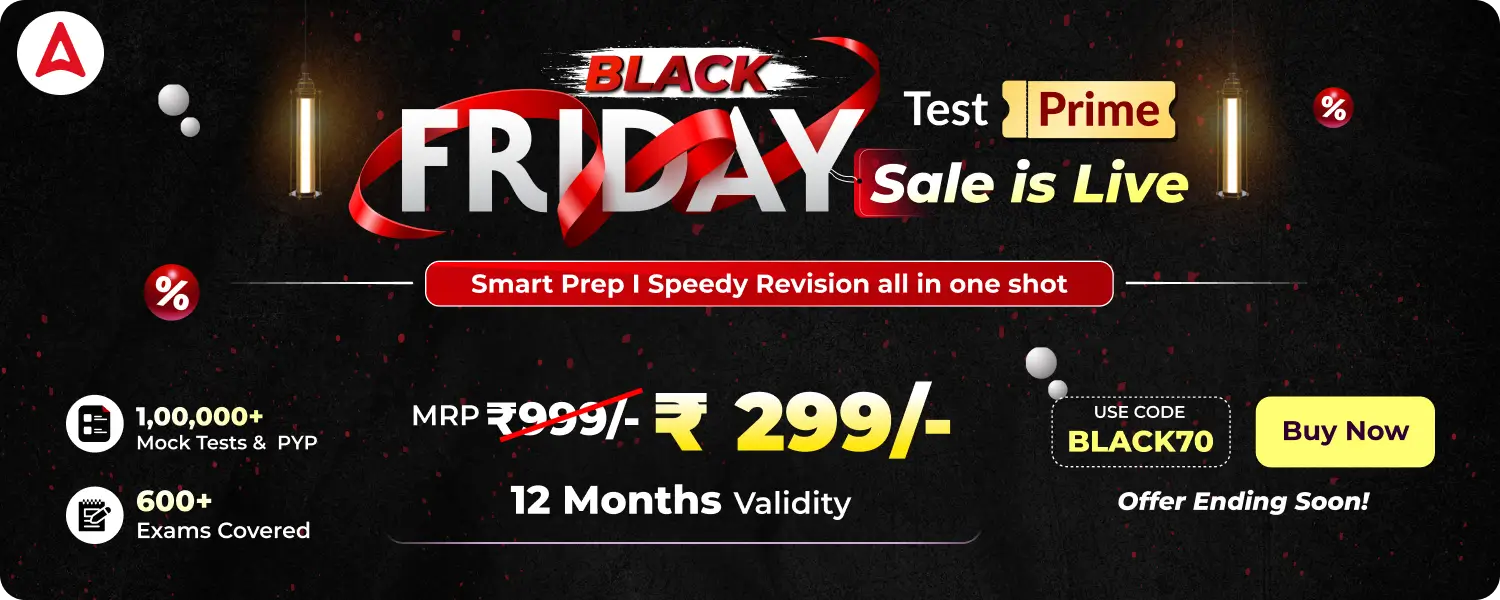
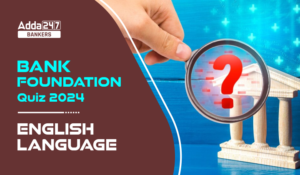 English Language Quiz For Bank Foundatio...
English Language Quiz For Bank Foundatio...
 English Language Quiz For Bank Mains Exa...
English Language Quiz For Bank Mains Exa...
